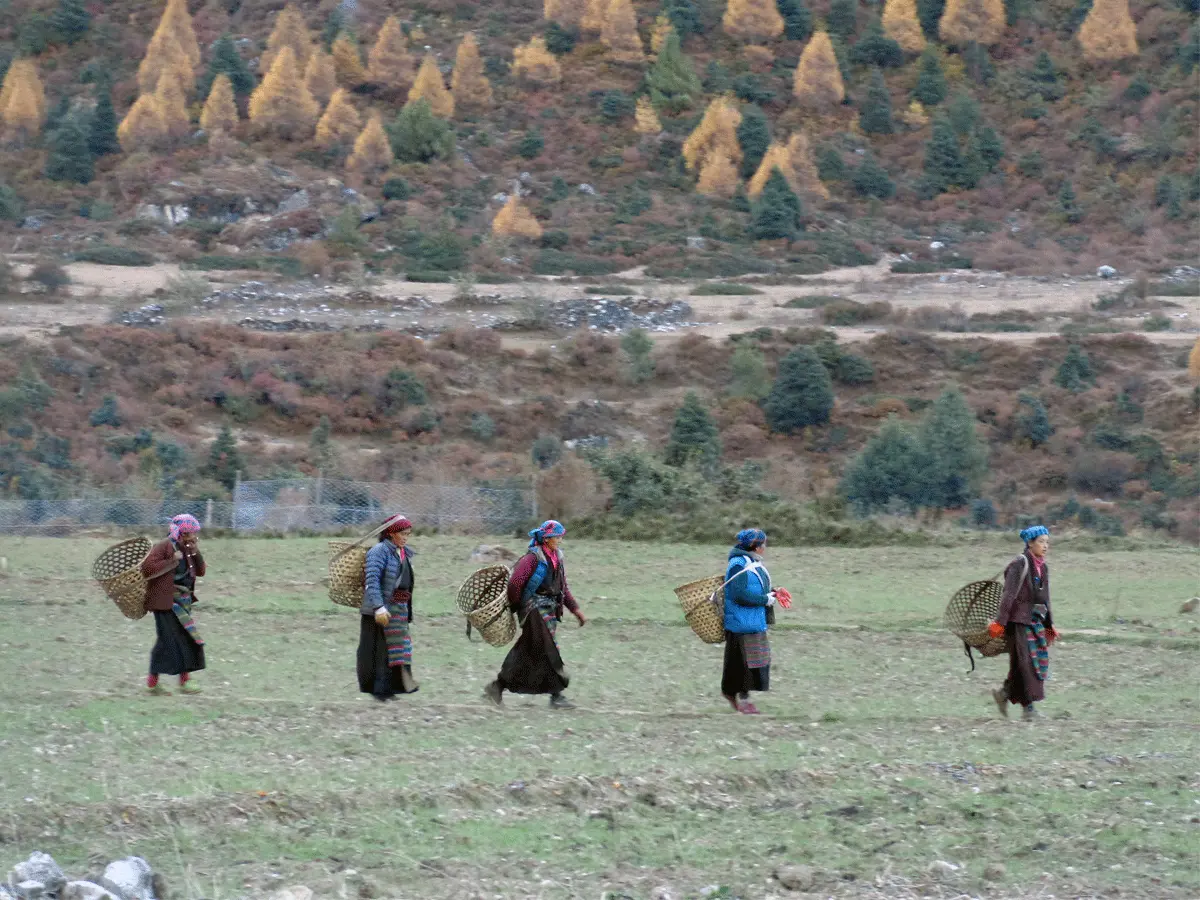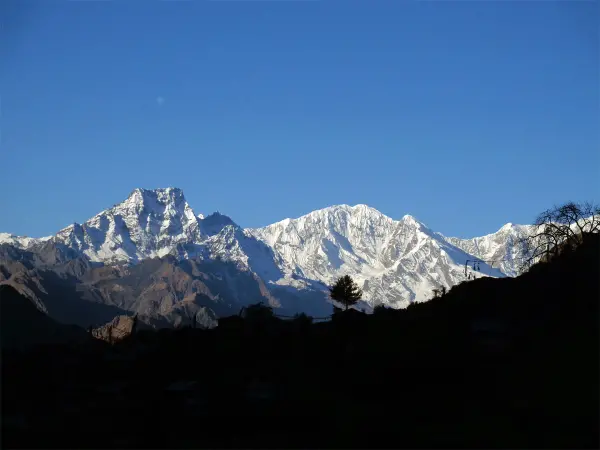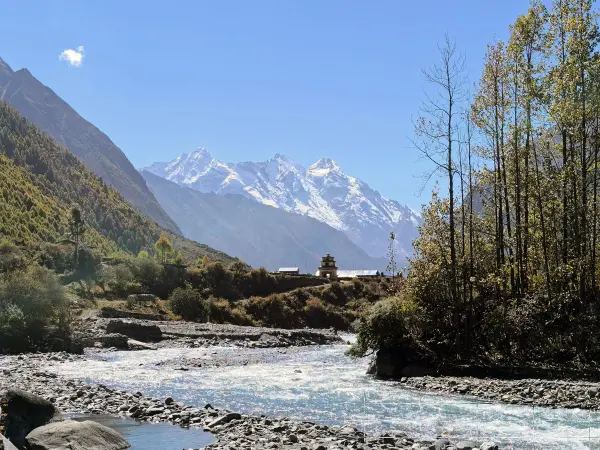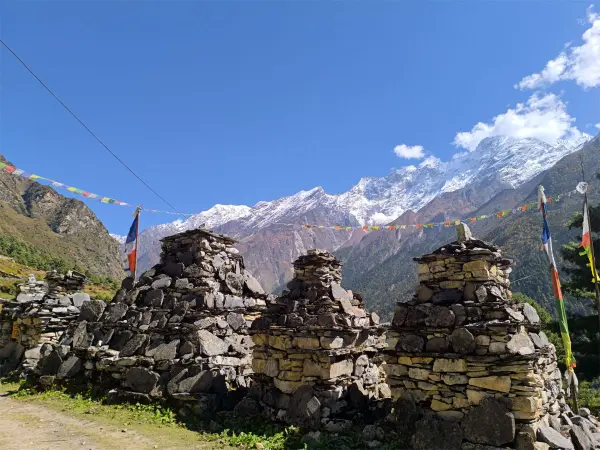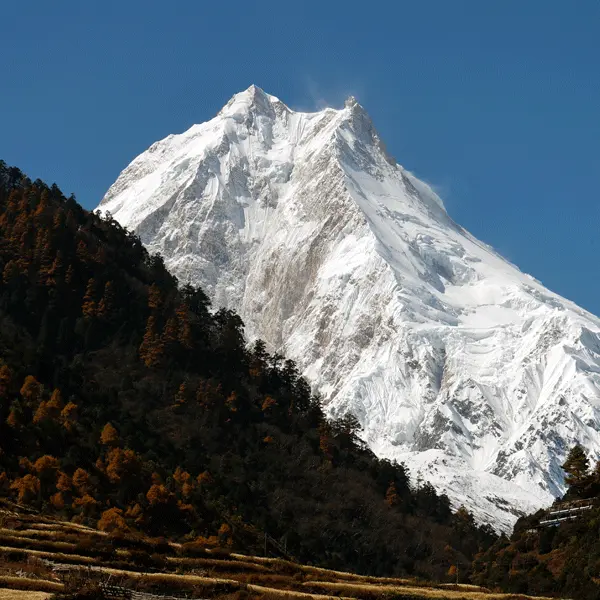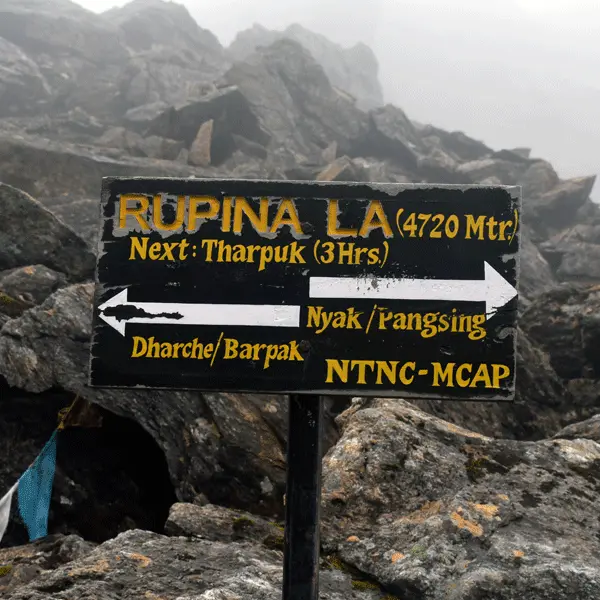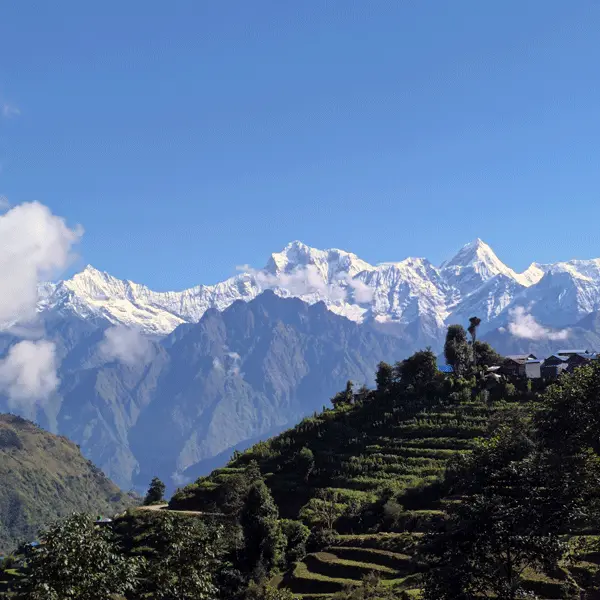The Tsum Valley Trek is a wonderful display of cultural and natural beauty. This region was cut off from the outside world for a long time due to its remote location, and it was restricted to foreigners by the government of Nepal. It was opened only in 2008. As a result, the number of tourists is low compared to other regions. Hence, the local people have been able to preserve and keep their ancient art, culture, and tradition in pristine condition.
The relatively unexplored and isolated trails consist of quiet hamlets, captivating forests, mountains, deep gorges, gompas, chortens, and mani walls. The valley is surrounded by Ganesh Himal, Sringi Himal, and Boudha Himal Range from three sides, providing spectacular mountain scenery during the trek. We can add a short hike to the Ganesh Himal Base Camp for more awesome mountain scenery.
The people of this valley practice Tibetan Buddhism. The culture and tradition are similar to those of the Tibetan people. Sacrificing or killing animals is restricted throughout the entire valley because of their Buddhist belief in Ahimsa (Non-violence). The region has many ancient Buddhist Gompas like Milarepa's Cave, Rachen Gompa, Mu Gompa, and Nunnery Gompa, which are not to be missed. For enthusiasts of the Tibetan Buddhist culture and splendid mountain sceneries, the Tsum Valley Trek is a must-do trek.
Our 15-day Tsum Valley Trek Itinerary starts from Machhakhola, a usual place from where the Manaslu Circuit Trek trail begins. We will follow the same trail up to a place ahead of Nyak and continue our trek to the Tsum Valley. After reaching Mu Gompa, we return from the same route and end our trek at the same place: Machhakhola.
Our program’s itineraries are well-crafted with proper planning. Suppose you want to customize the itinerary according to your desire, physical fitness level, time frame, etc. In that case, our experts will help you create a perfect itinerary that provides a top-notch experience with safety.




